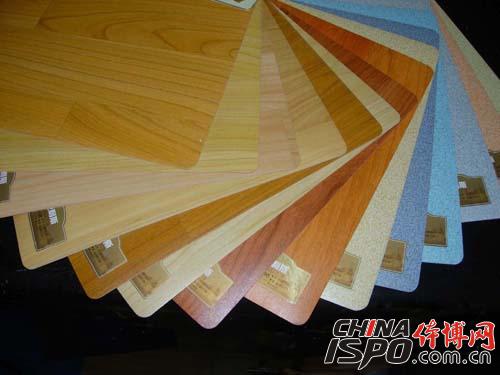With the rapid development of science and technology, PVC plastic flooring is widely used in public transportation, office buildings, medical care, education, shopping malls, sports venues and other buildings. PVC plastic floor is also an energy-saving material, with light weight, strong wear, beautiful color, anti-bacterial and other characteristics, is divided into the same core, composite, sports, anti-slip anti-static and conductive series, the construction only requires the art The knife can be arbitrarily cut out of the designer's ideal ground artwork. PVC plastic floor is easy to install, if the flatness of the ground meets the requirements, just use a special PVC plastic floor adhesive, you can DIY installation. 24 hours after installation is completed. PVC plastic floor installation can be carried out in the following ten steps:

tool:
1. Floor treatment: surface humidity tester, surface hardness tester, floor grinder, high-power industrial vacuum cleaner, wool roller, self-leveling stirrer, 30-liter self-leveling mixing drum, self-leveling tooth scraper, spiked shoes, free flow Flat deflation pump.
2. Floor laying: floor trimmer, cutting knife, two-meter steel ruler, glue scraper, steel pressure roller, slotting machine, welding torch, moon cutter, electrode striper, combination scriber
First, floor detection
1, using the temperature and humidity meter to detect temperature and humidity, indoor temperature and surface temperature of 15 °C is appropriate, should not be below 5 °C and 30 °C above the construction. The relative air humidity suitable for construction should be between 20% and 75%.
2, using the moisture content tester to detect the moisture content of the grass-roots level, the base layer moisture content should be less than 3%.
3, the strength of the grass-roots level should not be lower than the requirements of concrete strength C-20, otherwise it should use appropriate self-leveling to strengthen the strength.
4. The test result with a hardness tester should be that the surface hardness of the base layer is not less than 1.2 MPa.
5. For the construction of PVC plastic floor materials, the unevenness of the grass-roots level shall be within 2 meters of the ruler within a range of less than 2 millimeters. Otherwise, proper leveling should be used for self-leveling.
Second, floor pretreatment
1. Use a floor polisher with more than 1000 watts and an appropriate grinding pad to grind the floor as a whole. Remove paint, glue, and other residues. Raised and loose land, empty drums must also be removed.
2. Vacuum clean the floor with an industrial vacuum cleaner of not less than 2000 watts.
3. For the cracks on the floor, stainless steel ribs and polyurethane waterproof adhesive surface can be used to repair quartz sand.
Third, self-leveling construction primer
1. Absorbent bases such as concrete and cement mortar screed should be diluted with water at a ratio of 1:1 and then closed.
2. For non-absorbent substrates such as ceramic tile, terrazzo, marble, etc., it is recommended to use a solid interface agent for bottoming.
3, if the base layer moisture content is too high (> 3%) and the need for immediate construction, you can use the epoxy interface treatment agent for the primer treatment, but the premise is that the base layer moisture content should not exceed 8%.
4. The construction of the interface treatment agent should be uniform without obvious effusion. After the surface of the interface treatment agent is air-dried, the self-leveling construction in the next step can be performed.
Fourth, self-leveling construction stirring
1. Pour a pack of self-leveling into a mixing tank filled with clean water according to the prescribed water-cement ratio, and pour while mixing.
2. To ensure uniform self-leveling and mixing, use a high-power, low-speed electric drill with a special stirrer to stir.
3. Stir until the homogeneous slurry without agglomerates, leave it to mature for about 3 minutes, and stir briefly once.
4. The amount of water should be strictly in accordance with the water-cement ratio (please refer to the corresponding self-leveling instructions). Too little water can affect fluidity. Too much will reduce the strength after curing.
V. Self-leveling construction
1. The well-mixed self-leveling slurry is poured onto the construction floor. It will flow and level the floor by itself. If the design thickness is ≤ mm, a special scraper scraper must be scraped.
2. Afterwards, the construction personnel should wear special spiked shoes and enter the construction ground. Use a special self-leveling bleed roller to gently roll on the self-leveling surface to release the mixed air in the mixing and avoid the height of the air bubble and the interface.
3. Close the site immediately after the completion of the construction, walk within 5 hours, avoid heavy objects within 10 hours, and lay the PVC plastic floor after 24 hours.
4. In winter construction, the laying of the floor shall be carried out after 48 hours of self-leveling construction.
5. If self-leveling is required, it should be done after 12 hours of self-leveling.
Leather Folder,Custom Leather Folder,Office Leather Folder,Pu Leather Folder
TAISHAN JINRI STATIONERY PLASTIC CO.,LTD , https://www.jinri-folder.com
